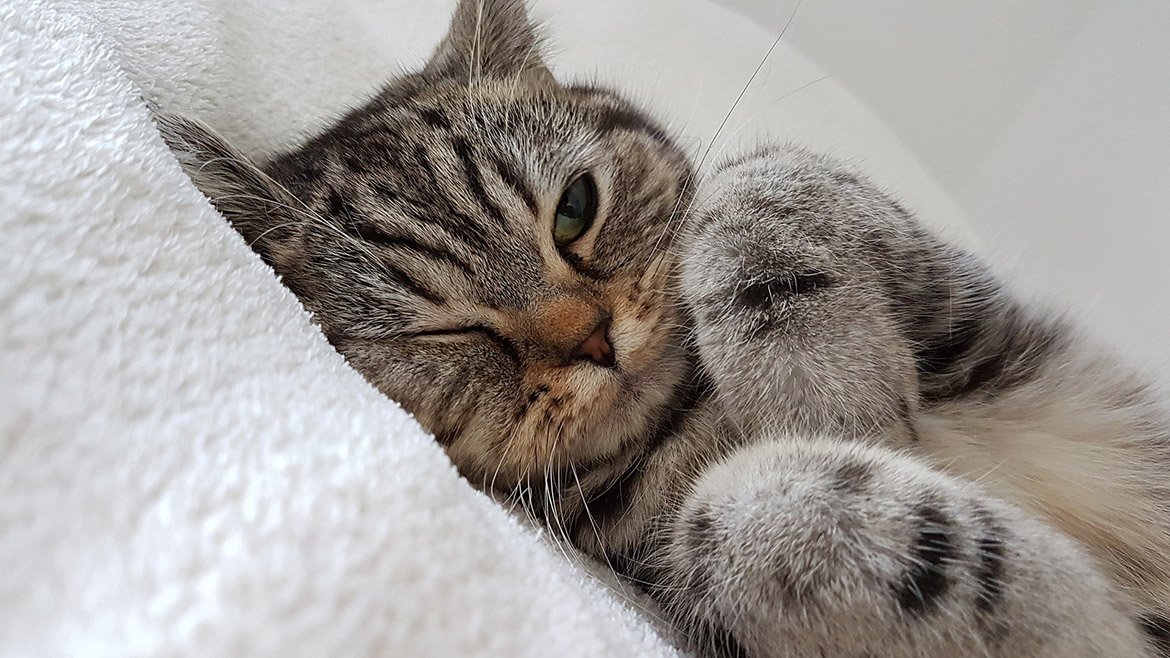Tabby cats are one of the most popular and beloved feline companions worldwide. Known for their distinctive coat patterns, which include stripes, swirls, and spots, tabbies are not a specific breed but rather a coat type found in many cat breeds. Whether you’re a first-time cat owner or an experienced feline enthusiast, providing proper care for your tabby cat is essential to ensure their health, happiness, and longevity. This detailed guide covers everything you need to know about tabby cat care, from nutrition and grooming to health and enrichment, while incorporating trending keywords and SEO optimization to help you find the best information.
1. Understanding Tabby Cats
What is a Tabby Cat?
- Tabby refers to a coat pattern, not a breed. This pattern is found in many cat breeds, including Domestic Shorthairs, Maine Coons, Bengals, and more.
- Tabby patterns include:
- Classic (Blotched): Swirling patterns resembling a marble cake.
- Mackerel: Narrow, parallel stripes resembling fishbones.
- Spotted: Distinct spots instead of stripes.
- Ticked: Agouti hairs with alternating light and dark bands, giving a salt-and-pepper appearance.
- Patched (Torbie): A combination of tabby and tortoiseshell patterns.
Personality Traits
- Tabby cats are known for their friendly, affectionate, and playful nature.
- They are highly intelligent and curious, often forming strong bonds with their human families.
- Their personalities can vary depending on their breed, but most tabbies are social and adaptable.
2. Nutrition and Feeding
Dietary Requirements
- Cats are obligate carnivores, meaning they require a diet rich in animal protein.
- A balanced diet for a tabby cat should include:
- High-quality commercial cat food (wet, dry, or a combination).
- Protein sources like chicken, turkey, fish, or beef.
- Essential fatty acids (e.g., omega-3 and omega-6) for skin and coat health.
- Taurine, an amino acid critical for heart and eye health.
- Limited carbohydrates, as cats have no nutritional requirement for carbs.
Feeding Schedule
- Kittens (under 6 months): Feed 3-4 small meals daily.
- Adult cats: Feed 2 meals per day or follow the portion guidelines on the food packaging.
- Avoid overfeeding to prevent obesity, a common issue in domestic cats.
Hydration
- Ensure your tabby has access to fresh, clean water at all times.
- Consider a cat water fountain to encourage drinking, as cats prefer running water.
Foods to Avoid
- Toxic foods for cats include chocolate, onions, garlic, grapes, raisins, alcohol, and caffeine.
- Avoid feeding your cat dog food, as it lacks essential nutrients for felines.
3. Grooming and Hygiene
Coat Care
- Tabby cats with short hair require minimal grooming. Brush them once a week to remove loose fur and reduce shedding.
- Long-haired tabbies (e.g., Maine Coons) need daily brushing to prevent matting and tangles.
- Use a stainless steel comb or a slicker brush for effective grooming.
Bathing
- Cats are generally self-cleaning and rarely need baths.
- Bathe your tabby only if they get into something dirty or sticky. Use a cat-specific shampoo and ensure the water is lukewarm.
Nail Trimming
- Trim your cat’s nails every 2-3 weeks to prevent overgrowth and scratching damage.
- Use a cat nail clipper and avoid cutting into the quick (the pink part of the nail).
Dental Care
- Brush your cat’s teeth 2-3 times a week using a cat-specific toothbrush and toothpaste.
- Dental treats and toys can help reduce plaque buildup.
Ear and Eye Cleaning
- Check your cat’s ears weekly for dirt or wax buildup. Clean gently with a vet-recommended ear cleaner and cotton ball.
- Wipe away any discharge from the eyes with a damp cloth.
4. Health and Wellness
Common Health Issues
- Tabby cats, like all cats, are prone to certain health conditions, including:
- Obesity: Monitor their weight and provide regular exercise.
- Dental Disease: Regular dental care is essential.
- Urinary Tract Issues: Ensure they stay hydrated and feed a balanced diet.
- Parasites: Fleas, ticks, and worms can affect cats. Use preventive treatments as recommended by your vet.
Veterinary Care
- Schedule annual check-ups with your veterinarian to monitor your cat’s health.
- Keep vaccinations up to date, including rabies, feline distemper, and feline leukemia.
- Spay or neuter your cat to prevent unwanted litters and reduce the risk of certain health issues.
Signs of Illness
- Watch for symptoms such as lethargy, loss of appetite, vomiting, diarrhea, excessive thirst, or changes in behavior. Contact your vet if you notice any concerning signs.
5. Enrichment and Mental Stimulation
Playtime
- Tabby cats are playful and energetic. Provide interactive toys like feather wands, laser pointers, and puzzle toys to keep them entertained.
- Rotate toys regularly to prevent boredom.
Scratching Posts
- Provide scratching posts or pads to satisfy your cat’s natural scratching instincts and protect your furniture.
Climbing and Perching
- Cats love to climb and observe their surroundings. Invest in a cat tree or shelves to create vertical space.
Social Interaction
- Spend quality time with your tabby cat daily. They thrive on attention and companionship.
- If you’re away often, consider getting a second cat for companionship (ensure proper introductions).
6. Litter Box Care
Choosing a Litter Box
- Select a litter box that is large enough for your cat to move around comfortably.
- For multi-cat households, provide one litter box per cat plus an extra.
Litter Type
- Experiment with different types of litter (clumping, non-clumping, silica, etc.) to find your cat’s preference.
- Avoid scented litters if your cat is sensitive to strong smells.
Cleaning
- Scoop the litter box daily to remove waste.
- Replace the litter and clean the box with mild soap and water weekly.
Location
- Place the litter box in a quiet, accessible location away from food and water bowls.
7. Training and Behavior
Litter Training
- Most cats instinctively use a litter box. If you’re training a kitten, place them in the box after meals and naps.
Behavioral Issues
- Address unwanted behaviors like scratching or biting with positive reinforcement and redirection.
- Avoid punishment, as it can lead to fear and anxiety.
Teaching Tricks
- Tabby cats are intelligent and can learn tricks like sitting, high-fiving, or fetching. Use treats and praise to encourage desired behaviors.
8. Creating a Safe Environment
Indoor vs. Outdoor
- Keeping your tabby cat indoors is safer, as outdoor cats face risks like traffic, predators, and diseases.
- If you want to provide outdoor access, consider a secure catio or leash training.
Cat-Proofing Your Home
- Remove toxic plants (e.g., lilies, poinsettias) and secure hazardous items like chemicals and small objects.
- Cover electrical cords and secure windows and balconies.
9. Lifespan and Long-Term Care
- With proper care, tabby cats can live 12-20 years or more.
- As your cat ages, adjust their diet, provide joint supplements if needed, and schedule more frequent vet visits.
Conclusion
Tabby cats make wonderful companions due to their affectionate nature and striking appearance. By providing a balanced diet, regular grooming, veterinary care, and plenty of enrichment, you can ensure your tabby cat lives a happy, healthy, and fulfilling life. Remember, every cat is unique, so pay attention to your tabby’s individual needs and preferences. With love and proper care, your tabby cat will be a cherished member of your family for many years to come.
Frequently Asked Questions (FAQs)
Q1: Are tabby cats hypoallergenic?
- No, tabby cats are not hypoallergenic. All cats produce allergens, primarily through their saliva and skin oils. If you have allergies, consider breeds known to produce fewer allergens, such as the Siberian or Balinese.
Q2: How can I tell if my tabby cat is overweight?
- You can assess your cat’s weight by feeling their ribs and spine. If you can’t easily feel these bones, your cat may be overweight. Consult your vet for a proper evaluation and diet plan.
Q3: Do tabby cats shed a lot?
- Shedding depends on the cat’s coat length and breed. Short-haired tabbies shed moderately, while long-haired tabbies shed more. Regular grooming can help manage shedding.
Q4: Can tabby cats be left alone for long periods?
- Tabby cats are social animals and may become lonely if left alone for extended periods. If you’re away often, consider getting a second cat or hiring a pet sitter.
Q5: Why does my tabby cat meow so much?
- Excessive meowing can indicate hunger, boredom, stress, or a medical issue. Observe your cat’s behavior and consult your vet if the meowing persists.
Q6: How do I introduce a new cat to my tabby?
- Introduce cats slowly by keeping them in separate rooms initially. Swap their scents using blankets or toys, and gradually allow supervised interactions. Patience is key to a successful introduction.
Q7: What’s the best way to trim my tabby cat’s nails?
- Use a cat-specific nail clipper and trim only the tips of the nails. If your cat is resistant, try trimming one or two nails at a time and reward them with treats.
Q8: How can I keep my tabby cat entertained?
- Provide a variety of toys, scratching posts, and climbing structures. Interactive playtime and puzzle feeders can also keep your cat mentally stimulated.
Q9: Should I let my tabby cat go outside?
- It’s safer to keep your tabby cat indoors to protect them from dangers like traffic, predators, and diseases. If you want to give them outdoor access, consider a secure enclosure or leash training.
Q10: How often should I take my tabby cat to the vet?
- Adult cats should have an annual check-up, while senior cats (7+ years) may need biannual visits. Kittens require more frequent visits for vaccinations and health monitoring.

